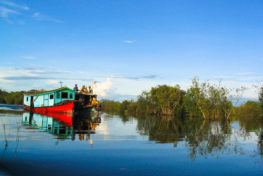

Acerca del autor
Follow @DiannaKopansky
Dianna Kopansky is the coordinator of the Global Peatlands Initiative in the Biodiversity and Land Management Branch at the U.N. Environment Programme (UNEP) based in Nairobi, Kenya. She delivers a suite of ecosystem management and climate change programs to contribute to the attainment of the U.N. Sustainable Development Goals. She has worked in Africa for the past 18 years on a range of issues within the emergency, humanitarian and development fields. For UNEP, she works globally and has led teams to develop and implement projects such as the 17 MDG-F Environment and Climate Change Joint Projects. As part of the executive office she developed U.N. system-wide strategies, policies to strengthen the regional offices, and enabled the inclusion of environment as a pillar in the U.N. Development Assistance Frameworks. Working in the Horn of Africa and Great Lakes regions, she led the environmental portfolio for the U.N. Food and Agriculture Organization's Regional Emergency Office for Africa. While with the U.N. Development Programme’s Drylands Development Centre, she provided direct technical support to governments in over 40 countries to integrate environmental issues into national development plans and poverty reduction strategies and developed a new area of work on drylands biodiversity. Prior to moving to Africa, she worked for the Canadian government preparing “State of Environment” reports and was part of a team that undertook a ground-breaking study – the Illness Cost of Air Pollution, resulting in the Ontario and Canadian Governments to dramatically improve air quality by lowering allowable pollutant levels. She holds a Master of Environmental Studies degree from Canada's York University and a Bachelor of Science Honors Degree in Conservation Biology and Ecology from the country's Queen’s University.
Otros blogs del autor
Noticias
- 5 Jul 2020
La conservación y el manejo sostenible de las turberas debe ser una prioridad para la salud y el bienestar de las comunidades
Países ricos en turberas destacan esfuerzos en curso para su conservación y restauración
